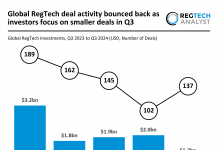Healthcare has experienced a major digital shift over the last decade. With the advent of electronic health records, the proliferation of the Internet of Medical Things (IoMT), and the widespread adoption of cloud and mobile technologies, patient care has seen revolutionary enhancements.
Yet, this digital progress has widened the opportunities for cybercriminals by increasing the vulnerability of healthcare systems, according to KYND.
Healthcare organisations today face a tangled web of suppliers and service providers, from pharmaceutical firms to IT service providers, each adding complexity to the supply chain. This digitisation, while essential, has also opened up new avenues for cyber threats.
The interconnected nature of modern global markets and the sophistication of these threats necessitate a rigorous approach to assessing and managing risks posed by supply chain partners. Without adequate protection, a vulnerability in one area can endanger the entire chain, making every partnered vendor a potential target for cybercriminals aiming for financial gain or disruption.
A significant cyber-attack on 3 June 2024 disrupted NHS services in South East London, marking a critical moment for healthcare cybersecurity. The attack, believed to have been executed by a ransomware group named Qilin, targeted pathology service provider Synnovis.
This disruption led to the cancellation of over 200 critical operations and thousands of appointments, highlighting the severe implications of such breaches. The NHS’s call for blood donations post-attack underscored the dire impact on emergency services, making it clear that cyber threats pose a direct risk to patient safety and trust in healthcare resilience.
In response to the NHS incident, it is evident that a singular solution to prevent cyberattacks is unrealistic. Instead, a multi-faceted strategy is imperative. By conducting thorough due diligence and risk assessments, healthcare entities can evaluate the cybersecurity stance of their partners.
Tools like KYND START can streamline these evaluations during the contractor selection phase. Moreover, managing third-party risks through rigorous criteria and continuous monitoring can strengthen the supply chain’s defence against cyber threats.
Implementing a least privilege access policy and a zero-trust model can further secure critical healthcare assets. Investing in cyber resilience—preparing for, responding to, and recovering from attacks—is crucial. This includes formulating robust incident response strategies and fostering a cybersecurity-conscious culture among staff.
The recent NHS cyber-attack is a stark reminder of the need for effective cyber risk management in healthcare. As digital threats evolve, so must our strategies to mitigate them. This involves a continuous commitment to improving security practices, fostering collaborative defence strategies, and ensuring the entire healthcare community is prepared to face and overcome these challenges.
The journey towards a secure and resilient healthcare system starts with recognising the significance of supply chain risks and taking decisive steps to address them.
Copyright © 2024 RegTech Analyst
Copyright © 2018 RegTech Analyst






